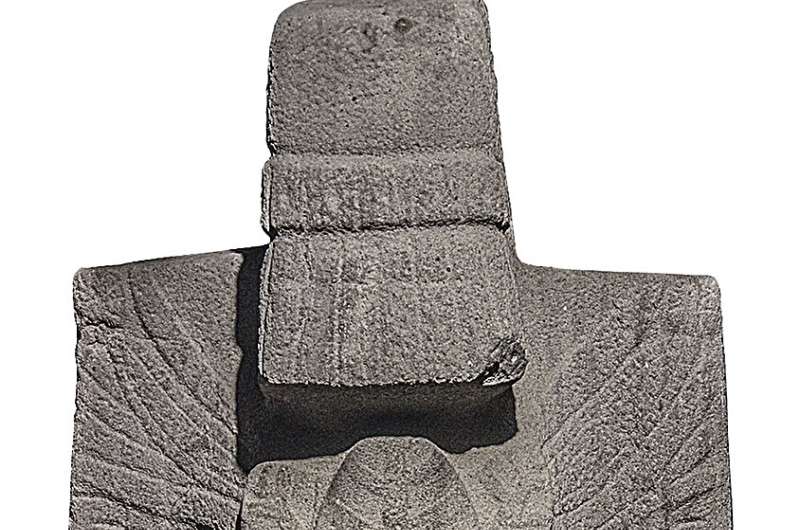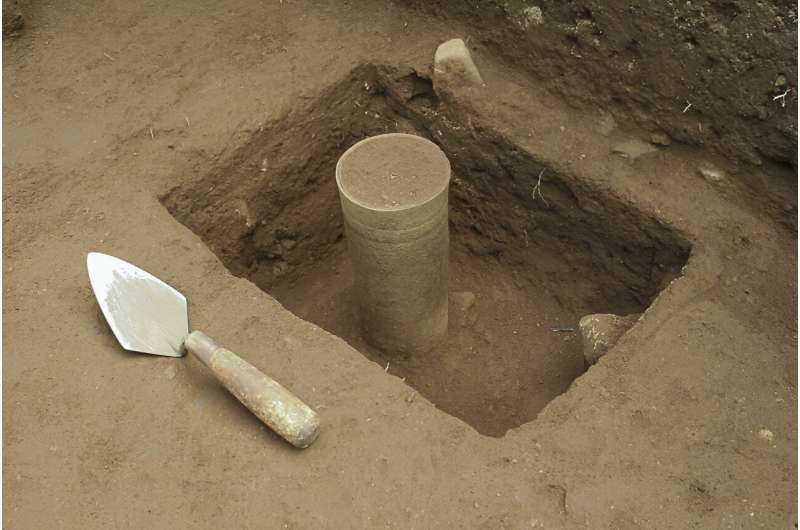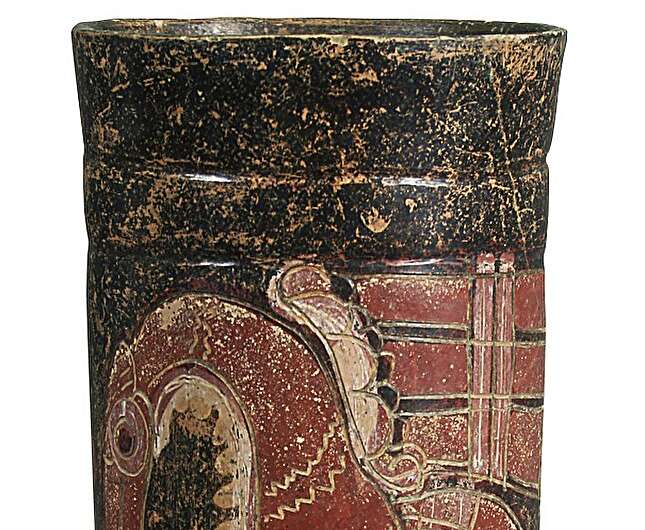Ancient Mesoamericans may have drunk tobacco in healing rituals, reveal archaeologists
Archaeologists have analyzed chemical residues from ceramic vases at the city of Cotzumalhuapa, Guatemala, revealing physical evidence of tobacco use in Mesoamerica, likely for ritual and therapeutic purposes.
Cotzumalhuapa was one of Mesoamerica’s greatest cities during the Late Classic Period (AD 650–950). Its artistic style spread widely across the Pacific coast and highlands of Guatemala, reflecting the political and economic importance of the city in the region. However, little is known about the ritual practices that took place there.
The use of tobacco in Mesoamerican rituals is known from written sources and from sculptures depicting tobacco leaves, but little conclusive physical evidence has been found, especially from pre-colonial periods.
“We knew that tobacco was a very important substance employed for a variety of ritual and therapeutic purposes in ancient Mesoamerica and across the New World,” says co-author of the research Dr. Oswaldo Chinchilla Mazariegos from Yale University. “However, archaeological evidence is scarce because the remains of tobacco rarely preserve well.”
In order to uncover more about ritual at Cotzumalhuapa, a team of researchers from Yale University and Lehman College of The City University of New York analyzed chemical residues from seven ceramic vases discovered near the acropolis of El Baúl. Their results are published in the journal Antiquity.

“We hoped that analysis of residues inside these well-preserved vessels would reveal details about the use of plants in ritual activities,” said Dr. Chinchilla Mazariegos.
The vessels yielded negative results for chemical markers of cacao, chili peppers, and achiote (a food dye and condiment). Out of the seven vases tested, three came back with positive results for nicotine. The vessels were of a shape typically used to contain liquids, so the discovery of tobacco residue was unexpected.
It was previously known that tobacco was smoked as a dried leaf or sniffed in powder form. This discovery suggests that it may also have been consumed as a liquid infusion.
Importantly, this is clear archaeological evidence for tobacco use in Mesoamerica, suggesting that the drinking of tobacco infusions may have been practiced together with smoking or sniffing.

The widespread use of tobacco for both ritual and therapeutic purposes (the two were almost certainly linked) is well-documented from early colonial to modern times, but the results indicate that this was taking place centuries earlier.
It also highlights the importance of archaeological research on lesser-studied regions.
“Despite its importance, the Pacific coast of Guatemala is severely neglected in archaeological research,” said Dr. Chinchilla Mazariegos. “We hope that these exciting results will stimulate further research and analysis of archaeological samples recovered at Pacific coastal sites.”
More information:
Adam Negrin et al, Residue analysis suggests ritual use of tobacco at the ancient Mesoamerican city of Cotzumalhuapa, Guatemala, Antiquity (2024). DOI: 10.15184/aqy.2024.13
Citation:
Ancient Mesoamericans may have drunk tobacco in healing rituals, reveal archaeologists (2024, March 5)
retrieved 5 March 2024
from https://phys.org/news/2024-03-ancient-mesoamericans-drunk-tobacco-rituals.html
This document is subject to copyright. Apart from any fair dealing for the purpose of private study or research, no
part may be reproduced without the written permission. The content is provided for information purposes only.

Archaeologists have analyzed chemical residues from ceramic vases at the city of Cotzumalhuapa, Guatemala, revealing physical evidence of tobacco use in Mesoamerica, likely for ritual and therapeutic purposes.
Cotzumalhuapa was one of Mesoamerica’s greatest cities during the Late Classic Period (AD 650–950). Its artistic style spread widely across the Pacific coast and highlands of Guatemala, reflecting the political and economic importance of the city in the region. However, little is known about the ritual practices that took place there.
The use of tobacco in Mesoamerican rituals is known from written sources and from sculptures depicting tobacco leaves, but little conclusive physical evidence has been found, especially from pre-colonial periods.
“We knew that tobacco was a very important substance employed for a variety of ritual and therapeutic purposes in ancient Mesoamerica and across the New World,” says co-author of the research Dr. Oswaldo Chinchilla Mazariegos from Yale University. “However, archaeological evidence is scarce because the remains of tobacco rarely preserve well.”
In order to uncover more about ritual at Cotzumalhuapa, a team of researchers from Yale University and Lehman College of The City University of New York analyzed chemical residues from seven ceramic vases discovered near the acropolis of El Baúl. Their results are published in the journal Antiquity.

“We hoped that analysis of residues inside these well-preserved vessels would reveal details about the use of plants in ritual activities,” said Dr. Chinchilla Mazariegos.
The vessels yielded negative results for chemical markers of cacao, chili peppers, and achiote (a food dye and condiment). Out of the seven vases tested, three came back with positive results for nicotine. The vessels were of a shape typically used to contain liquids, so the discovery of tobacco residue was unexpected.
It was previously known that tobacco was smoked as a dried leaf or sniffed in powder form. This discovery suggests that it may also have been consumed as a liquid infusion.
Importantly, this is clear archaeological evidence for tobacco use in Mesoamerica, suggesting that the drinking of tobacco infusions may have been practiced together with smoking or sniffing.

The widespread use of tobacco for both ritual and therapeutic purposes (the two were almost certainly linked) is well-documented from early colonial to modern times, but the results indicate that this was taking place centuries earlier.
It also highlights the importance of archaeological research on lesser-studied regions.
“Despite its importance, the Pacific coast of Guatemala is severely neglected in archaeological research,” said Dr. Chinchilla Mazariegos. “We hope that these exciting results will stimulate further research and analysis of archaeological samples recovered at Pacific coastal sites.”
More information:
Adam Negrin et al, Residue analysis suggests ritual use of tobacco at the ancient Mesoamerican city of Cotzumalhuapa, Guatemala, Antiquity (2024). DOI: 10.15184/aqy.2024.13
Citation:
Ancient Mesoamericans may have drunk tobacco in healing rituals, reveal archaeologists (2024, March 5)
retrieved 5 March 2024
from https://phys.org/news/2024-03-ancient-mesoamericans-drunk-tobacco-rituals.html
This document is subject to copyright. Apart from any fair dealing for the purpose of private study or research, no
part may be reproduced without the written permission. The content is provided for information purposes only.
